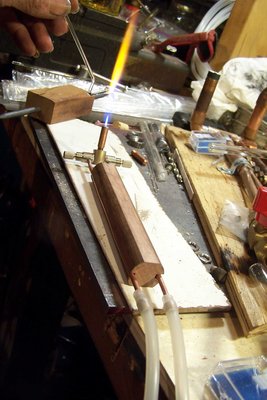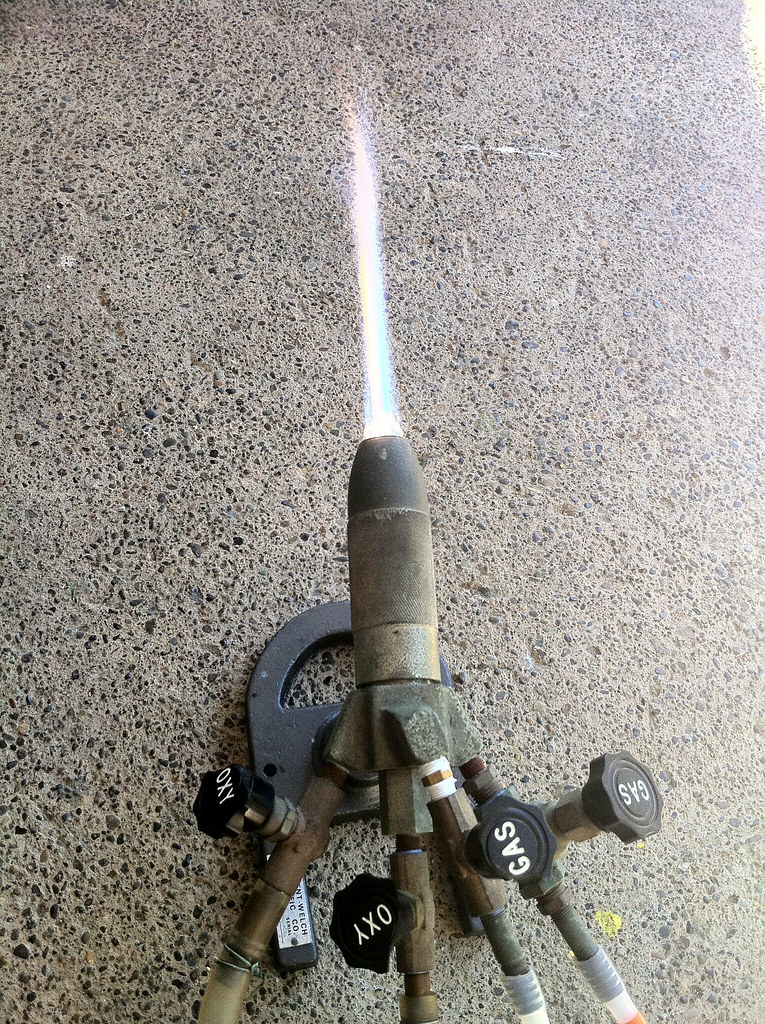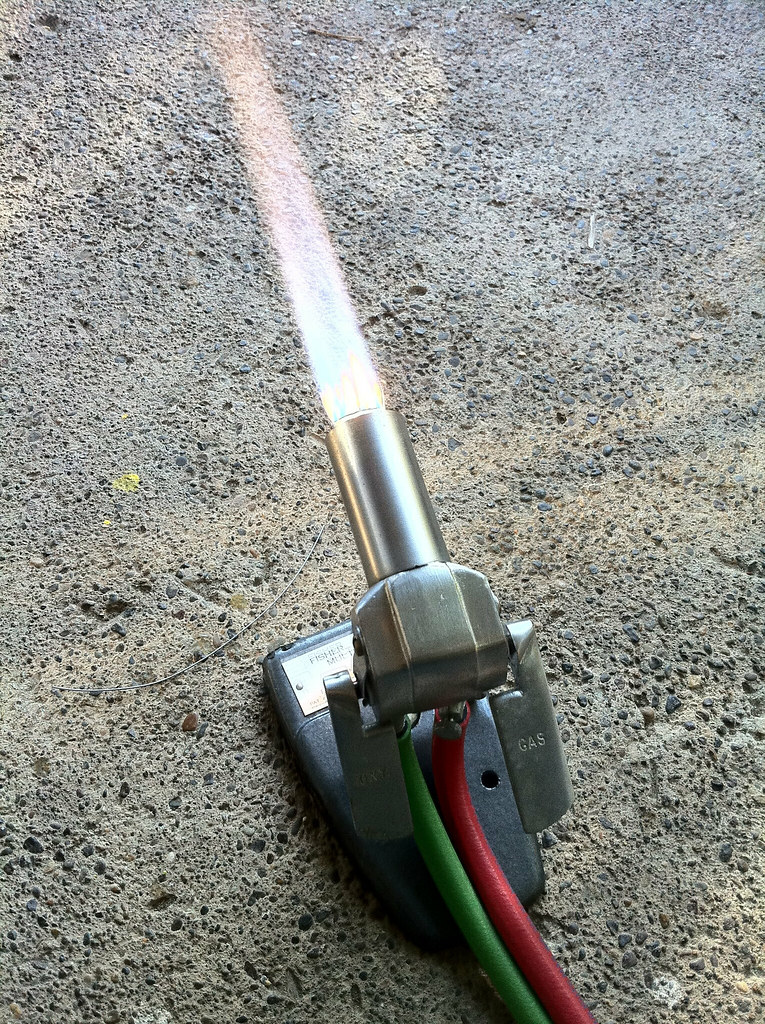Well, I've had that happen even to the inside of a piece of lead glass I was heating the outside of...FWIW. You just can't get that stuff too hot or the PbO becomes Pb again, even in air, it seems.
I'll have to try it with an oxidizing flame, but in general those are just too hot for what you do with that kind of thing -- you can crack this stuff with the heat shock.
Yes, this is a good demo of why liquid hydrocarbon fuels are cool in IC engines. You don't have to carry the oxidizer around! Which in the case of air, is about 15/16 of the total weight.
No battery will ever match that unless we find some new stuff in the periodic table to work with -- in terms of energy/pound, we are there now. Some lithium cells have about the same
energy density as high explosives.
I'll have to fire up the miniature torch I built that I mostly use here and get a picture -- I used a MIG tip for it, and miniature needle valves. I use MAPP gas in normal
propane torches for bulk preheating, and that to work the details. I rarely reach for the oxy-acetylene unless it's quartz. The MIG tip torch is just right for things up
to about an inch, and doesn't eat so much gas or oxygen. Very tiny point flame.

- Homebrew torch for glass work
Found an old pic. If I were making another one, I'd put the valves back on the handle instead of where they are -- they get hot there. I was a little concerned about having any amount of mixed gas volume...the thing on the right of the pic is a set of crossfires I made. Believe me, at that diameter a flashback is all too exciting, that one's air-gas only, can't do oxygen. In this picture, the torch is at full snot -- I usually don't do that for real work. The pic also demos why you want the fancy glasses that kill just the yellow sodium lines (which is what I was doing when I took it, I was showing a visitor how cool they are).
Posting as just me, not as the forum owner. Everything I say is "in my opinion" and YMMV -- which should go for everyone without saying.



